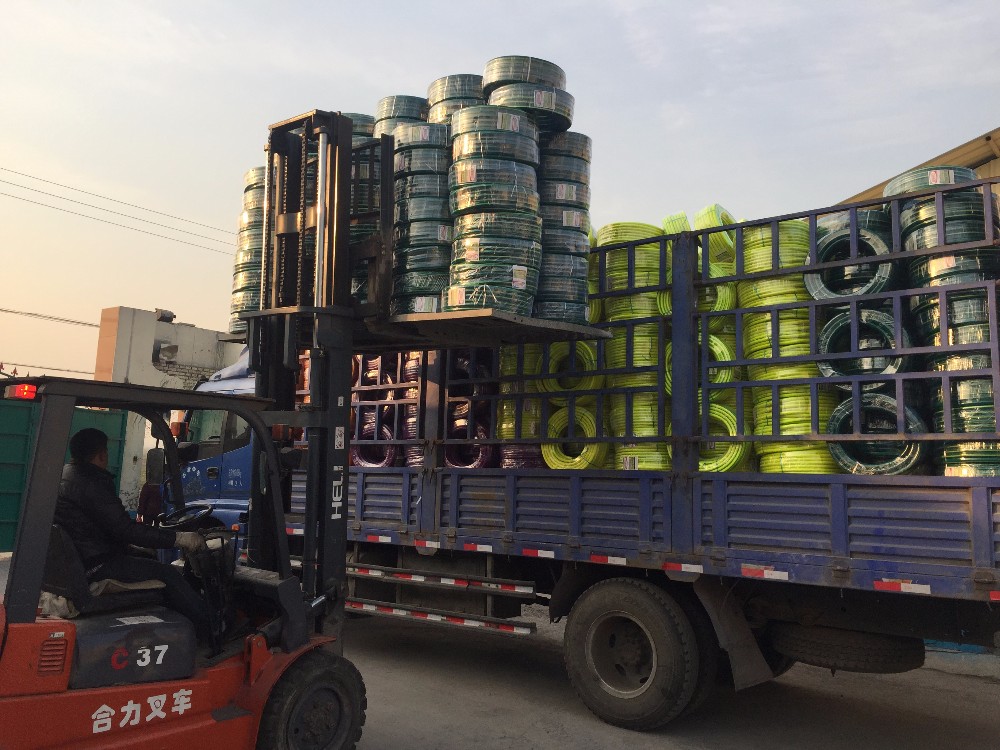polyurethane hose vs rubber
Polyurethane Hose vs. Rubber Hose A Comprehensive Comparison
When it comes to choosing the right type of hose for various applications, two popular materials often come to the forefront polyurethane and rubber. Each material comes with its own set of advantages and disadvantages, making it essential to understand their characteristics before making a decision. In this article, we will explore the key differences between polyurethane hoses and rubber hoses, analyzing their performance, durability, flexibility, chemical resistance, and cost-effectiveness.
1. Composition and Structure
Polyurethane (PU) is a versatile polymer commonly used in a variety of industrial applications, including hoses. Polyurethane hoses are made from a combination of flexible polyether or polyester and isocyanates, a process that results in a strong, lightweight product. In contrast, rubber hoses are made from natural rubber or synthetic rubber compounds, which have been traditionally used for their stretchability and resilience.
2. Flexibility and Weight
One of the significant advantages of polyurethane hoses is their lightweight and flexible nature. This makes them easy to handle and maneuver, especially in applications where the hose must be moved frequently. Polyurethane hoses can bend easily and are less likely to kink, providing consistent flow and reducing the chances of blockages.
Rubber hoses, while also flexible, tend to be heavier and may not offer the same level of maneuverability as polyurethane. However, they do provide a robust structure that can withstand certain types of mechanical stress more effectively.
3. Durability and Wear Resistance
Durability is another crucial factor when comparing these two materials. Polyurethane hoses are known for their excellent abrasion resistance, which makes them ideal for handling abrasive materials or for use in environments with high wear and tear. They tend to last longer in such conditions, reducing the frequency of replacements.
On the other hand, rubber hoses, although durable, may not withstand the same level of abrasion as polyurethane. However, they excel in high-temperature environments, where many polyurethane products would fail. Rubber hoses can handle heat better and maintain structural integrity under extended exposure to high temperatures.
polyurethane hose vs rubber

4. Chemical Resistance
When it comes to chemical resistance, polyurethane hoses have the upper hand in many scenarios. They generally resist a wider range of chemicals, oils, and solvents compared to rubber hoses, making them suitable for various industrial applications, such as chemical processing and transferring petroleum products.
Rubber hoses can be susceptible to degradation when exposed to certain chemicals, including fuel, oils, and solvents. Therefore, when chemical resistance is a priority, polyurethane may be the more suitable option.
5. Temperature Range
Both polyurethane and rubber hoses have specific temperature ranges they can handle. Polyurethane hoses typically perform well in a temperature range from -40°F to 190°F (-40°C to 88°C), making them versatile for various climates. However, they may lose some flexibility in extremely cold temperatures.
Rubber hoses, by contrast, can usually withstand harsher temperatures. Many rubber hoses can operate in environments ranging from -20°F to 200°F (-29°C to 93°C) and some specialized formulations can go even higher. This characteristic makes rubber hoses preferable for high-heat applications.
6. Cost-Effectiveness
When considering long-term costs, polyurethane hoses can be initially more expensive than rubber hoses. However, due to their durability and resistance, they often prove to be a more cost-effective solution over time as they require fewer replacements. Rubber hoses may be less expensive upfront but could incur higher long-term costs in terms of maintenance and replacements.
Conclusion
In conclusion, the choice between polyurethane hoses and rubber hoses ultimately depends on the specific application and environmental conditions. Polyurethane hoses are lightweight, flexible, and chemically resistant, making them a great choice for various industrial applications, especially where abrasion is a concern. On the other hand, rubber hoses excel in high-temperature environments and provide excellent durability under mechanical stress. By understanding these key differences, users can select the most suitable hose material for their needs, ensuring optimal performance and longevity in their operations.
-
Top Quality Oxy Acetylene Hoses for Sale Fit for Welding DemandsNewsJul.28,2025
-
The Future of Pneumatic Air Tubes in IndustryNewsJul.28,2025
-
Superior and Reliable LPG Hose Pipe Solutions for Every NeedNewsJul.28,2025
-
Exceptionally Durable and Versatile Premium Braided PVC TubingNewsJul.28,2025
-
Best Adapters for Connecting Garden Hose to PVC Pipe ConnectionsNewsJul.28,2025
-
The Essential Role of LPG Hoses in Safe and Efficient Gas DistributionNewsJul.16,2025














